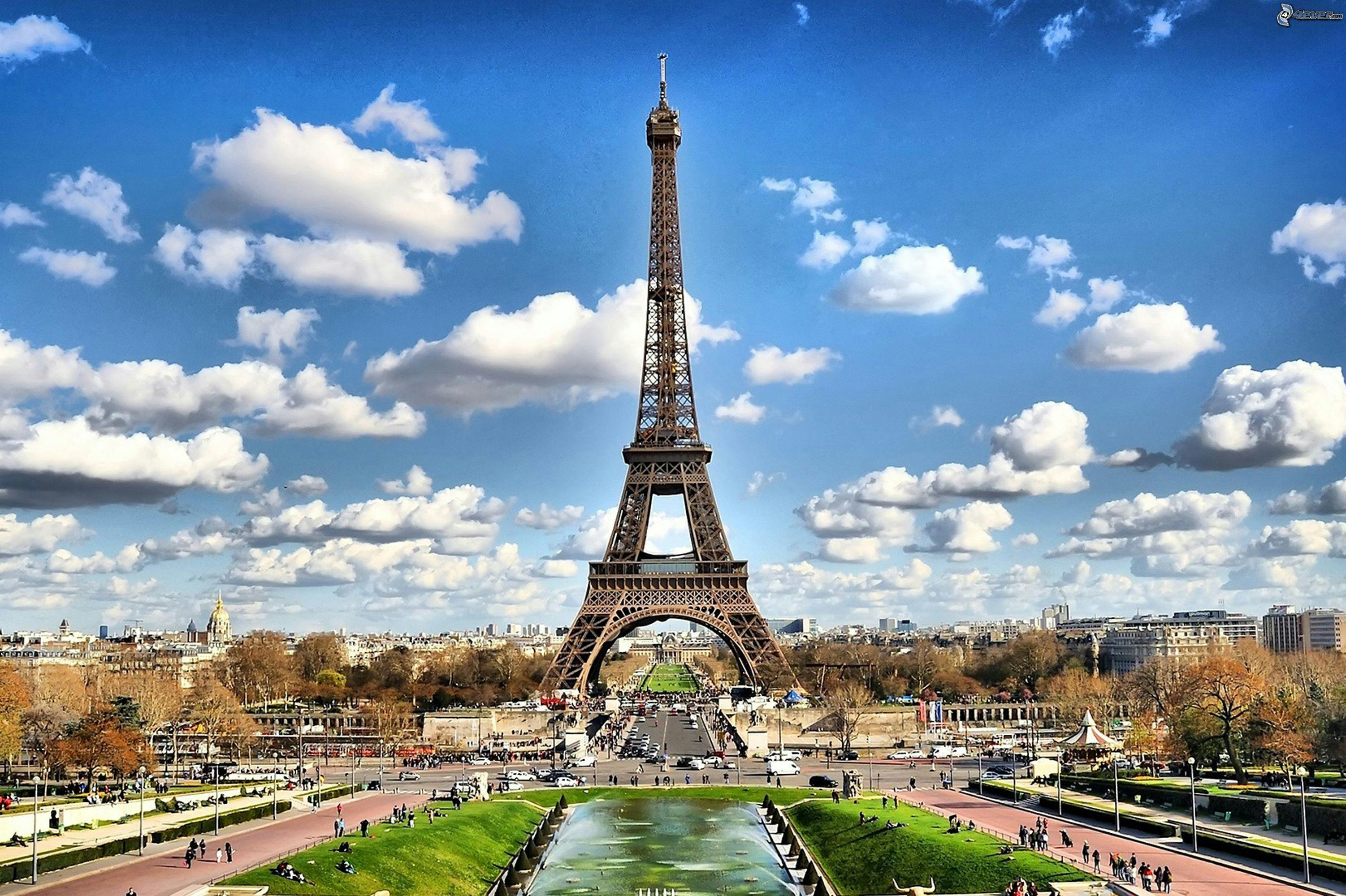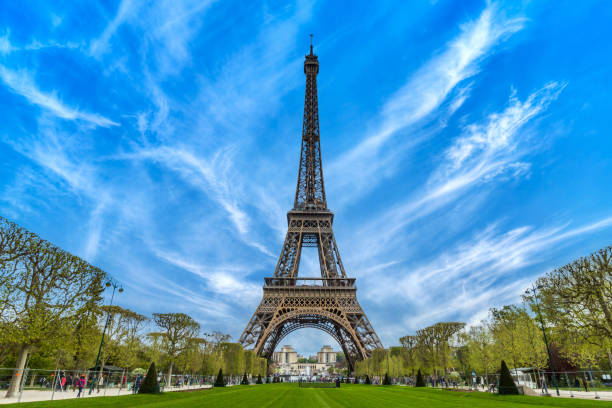The Eiffel Tower: Celebrating Over 135 Years of Parisian Elegance, Engineering Brilliance, and Global Icon Status
The Eiffel Tower's story begins in the late 19th century, when France sought to create a spectacular centerpiece for the 1889 Exposition Universelle (World's Fair) that would commemorate the centenary of the French Revolution. The French government launched a competition in 1886 to design a monument that would showcase French industrial prowess and artistic achievement. From over 100 submissions, the design by engineer Gustave Eiffel and his team was selected—a bold proposal for a 300-meter (984-foot) iron tower that would dwarf all previous human constructions .

Photo from Pexels
The initial concept came from two senior engineers in Eiffel's company—Maurice Koechlin and Émile Nouguier—who in June 1884 envisioned "a great pylon, consisting of four lattice girders standing apart at the base and coming together at the top" . Eiffel initially showed little enthusiasm for the design, finding it too utilitarian, until architect Stephen Sauvestre was brought in to enhance its aesthetics. Sauvestre proposed decorative stonework pedestals, monumental linking arches, glass-walled halls, and a bulb-shaped top—elements that, while later simplified, gave the tower its distinctive character .
Even before construction began, the tower became mired in controversy. A group of prominent artists and intellectuals, including Charles Gounod, Guy de Maupassant, and Alexandre Dumas, published a scathing protest in February 1887, calling it a "monstrous Eiffel Tower" and "a gigantic black factory chimney" that would disgrace Paris . The criticism was so intense that a "Committee of Three Hundred" (one member for each meter of the tower's height) formed to oppose its construction . Gustave Eiffel defended his project eloquently, arguing that the tower would symbolize "not only the art of the modern engineer, but also the century of Industry and Science in which we are living" .
Engineering Marvel: Construction Against All Odds
Construction of the Eiffel Tower began on January 28, 1887, with the digging of its foundations—a challenging endeavor that required innovative solutions, especially on the Seine side where builders used watertight metal caissons and compressed air to work below water level . The project was a masterpiece of precision engineering and prefabrication. All 18,038 metallic parts were specifically designed and calculated in Eiffel's factory at Levallois-Perret, traced to an accuracy of one-tenth of a millimeter, then assembled into larger sections about five meters each before being transported to the site.
The assembly process was equally remarkable. A workforce of 150-300 on-site workers (and another 150 at the factory) pieced together what journalists described as a "gigantic Meccano set" . They used wooden scaffolding and small steam cranes mounted directly on the tower as it rose. The metal pieces were initially bolted together, then secured with 2.5 million thermally assembled rivets—a process requiring teams of four men per rivet (one to heat it, one to hold it, one to shape the head, and one to hammer it) . Only about a third of these rivets were inserted on-site, demonstrating the efficiency of Eiffel's prefabrication methods .
The construction proceeded at a breathtaking pace. The pillars' mounting began on July 1, 1887; the first floor was completed by April 1, 1888; the second floor by August 14, 1888; and the top was assembled by March 31, 1889 . Remarkably, the entire structure was completed in just 2 years, 2 months, and 5 days—a record time considering the rudimentary means available and the unprecedented height being attempted . Journalist Emile Goudeau vividly described the chaotic yet precise construction site: "A thick cloud of tar and coal smoke seized the throat...these black figures, appearing larger than life against the background of the open sky, looked as if they were reaping lightning bolts in the clouds" .
The tower's design incorporated several groundbreaking engineering principles. The curvature of its uprights was mathematically calculated to offer optimal wind resistance—Eiffel explained that "all the cutting force of the wind passes into the interior of the leading edge uprights" . The open lattice structure reduced wind load while maintaining strength, and the tower was designed to sway slightly in high winds (though never more than 12 cm even in the strongest gusts) . Its weight was carefully distributed—each of the four corner edges rests on supporting blocks applying just 3-4 kilograms of pressure per square centimeter .
From Temporary Exhibit to Permanent Icon
When the Eiffel Tower opened to the public on May 15, 1889, as the entrance arch for the Exposition Universelle, it immediately became the fair's star attraction . Standing at 300 meters (324 meters including its flagpole), it was twice as tall as the Great Pyramid of Giza or St. Peter's Dome in Rome, making it the tallest human-made structure in the world—a title it would hold for 41 years until surpassed by New York's Chrysler Building in 1930 . The tower welcomed nearly two million visitors during the exposition, who marveled at its unprecedented height and the panoramic views it offered of Paris.

Photo from iStock
Originally, the tower was only meant to stand for 20 years, with its permit expiring in 1909. However, Eiffel—who had invested heavily in the project—ingeniously ensured its survival by promoting its scientific utility. The day after its inauguration, he installed a meteorology lab on the third floor where he conducted experiments in physics and aerodynamics . In 1898, it facilitated the first long-distance radio transmission; by 1903, it served as a military radio post; and in 1909, it became a laboratory for studying aerodynamics . These practical applications justified its continued existence, and by the time its original permit expired, the tower had become too beloved and symbolically important to dismantle .
The early 20th century saw the tower evolve from a controversial oddity to a cherished symbol of Paris. It played crucial roles in both World Wars—during WWI, its radio transmitter jammed German communications, and in WWII, the French cut its elevator cables when Hitler visited Paris, forcing him to climb the stairs if he wanted to reach the top (he didn't) . This act of defiance cemented the tower's status as a symbol of French resilience.
Architectural and Cultural Significance
The Eiffel Tower represents a watershed moment in architectural history—a bold departure from traditional stone construction that heralded the age of modern metal architecture. Its design perfectly balances form and function, with every element serving a structural purpose while creating an aesthetically pleasing silhouette. The tower's base covers 125 square meters (410 square feet), tapering gracefully to a narrow pinnacle . The four massive piers, connected by decorative arches at the base, converge upward in a parabolic curve that was both mathematically elegant and structurally sound .
Beyond its engineering achievements, the tower has become a cultural canvas reflecting France's artistic spirit. The names of 72 French scientists and engineers are engraved around the first floor—a tribute to intellectual achievement that was painted over in the early 20th century but restored in the 1980s . The tower's lighting has evolved into an art form itself; since 1925, when automaker André Citroën financed a dazzling light show featuring Zodiac symbols, the tower has been synonymous with nighttime spectacle . Today, its 20,000 bulbs sparkle for five minutes every hour after dusk, creating what is arguably the world's most famous light display .
The tower has also served as a platform for countless artistic and political statements. It's been painted different colors over the years—from reddish-brown to ochre before settling on its current "Eiffel Tower Brown" in 1968 (actually three shades, darkest at the bottom) . It's been illuminated in special colors to mark events like France's EU presidency or its 120th birthday, and has hosted temporary installations including an ice rink and gardens . Gustave Eiffel's private apartment on the top floor—where he entertained luminaries like Thomas Edison—is now open to the public, complete with wax figures recreating their meetings .
The Tower as a Living Monument
Over its 135-year history, the Eiffel Tower has continually adapted to remain relevant. In 1957, a television antenna added 20 meters to its height (now 330 meters with antennas) . The installation of elevators was itself a technological triumph—the Otis Elevator Company created special glass-cage machines that could ascend the tower's curves . Recent additions include eco-friendly wind turbines on the second floor that power some of its operations, demonstrating a commitment to sustainability .
The tower's maintenance is an ongoing challenge. It requires repainting every seven years—a process that uses 60 tons of paint and takes 18 months to complete . This regular upkeep has preserved the iron structure from corrosion, ensuring that what was once derided as temporary has become enduring .
As a tourist attraction, the Eiffel Tower is unparalleled. It welcomes nearly seven million visitors annually (about 75% from abroad), making it the world's most-visited paid monument . Visitors can ascend to three levels—the first at 57 meters (187 feet), the second at 115 meters (377 feet), and the top at 276 meters (906 feet)—via stairs or elevators . The experience has evolved from simple sightseeing to include gourmet dining at Jules Verne restaurant, champagne at the top-floor bar, and multimedia exhibits about the tower's history .
Legacy and Global Impact
The Eiffel Tower's influence extends far beyond Paris. It has inspired countless replicas worldwide (from Las Vegas to Tokyo) and become a universal symbol of romance, adventure, and human aspiration. Philosopher Roland Barthes captured its essence: "A vision, an object, a symbol, the Tower is anything that Man wants it to be, and this is infinite" . It appears in more films, photographs, and artworks than perhaps any other structure, shaping global perceptions of Paris as the "City of Light" .
Remarkably, the tower has maintained its relevance across three centuries by continually reinventing itself—from scientific laboratory to military asset, from radio transmitter to tourist magnet, from engineering oddity to artistic muse. Its story reflects broader narratives of technological progress, cultural change, and the enduring human desire to reach new heights, both literally and metaphorically.
As we celebrate over 135 years of the Eiffel Tower, we honor not just an iron structure, but a testament to human imagination—a work that began as a temporary exhibition piece and became immortal, that was born from controversy but grew into beloved acceptance, that represents both French identity and universal human achievement. In Gustave Eiffel's words, it stands as "an expression of France's gratitude" to the ideals of the Revolution that birthed it—liberty, progress, and the boundless potential of human creativity.

0 Comment to "Eiffel Tower, France: Over 135 Years of Parisian Elegance, Engineering Marvel, and Timeless Global Icon"
Post a Comment